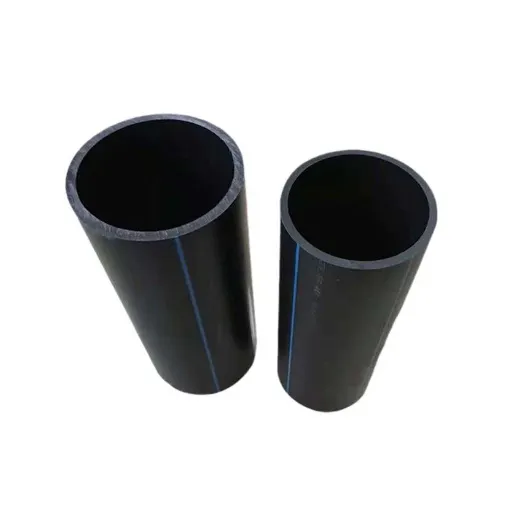The pipes made of high-density polyethylene (HDPE) are the fastest-growing modern infrastructure specialization due to its durability, flexibility, and resistance to corrosion. But, the pipe thickness gets selected seriously as it affects performance, durability, and least cost. This article goes into specifications and sizing of HDPE pipe thickness so that the reader can be equipped with the technical knowledge to make a well-informed decision. Specifying HDPE pipe thickness for water distribution systems, industrial applications, or pipeline compliance is essential to achieving the best results.
Introduction to HDPE Pipes
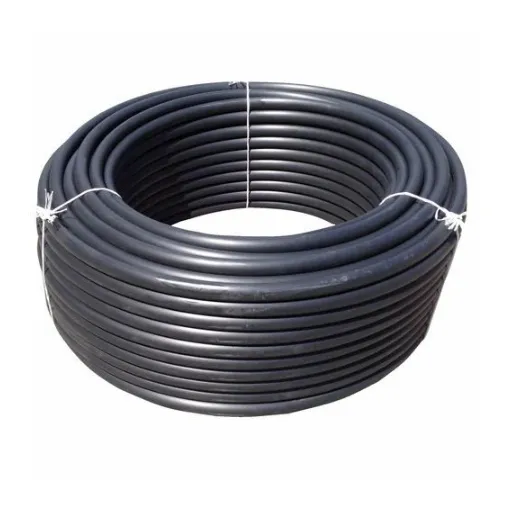
What is HDPE Pipe?
High-Density Polyethylene pipes are a thermoplastic piping solution. Technically, it is quite durable and flexible while also resisting corrosion; HDPE pipes are therefore commonly used in water distribution systems, gas mains, sewage systems, and other industrial applications. Being made of the highest grade of polyethylene materials, the HDPE has very high tensile strength with low weight and hence is an ideal choice for applications that demand both performance and lightweight features in various environments.
HDPE pipes have very high chemical resistance, hence able to work under acid, base, salt, and an environment full of aggressive materials. The smooth interior surface of HDPE pipes facilitates the least friction losses during fluid flow, hence, creating more efficiency and less power warnings. Moreover, flexibility can resist ground shifting, including seismic activity or soil tensorization, while minimizing damage during operations in the rough terrains.
Long service life is the other important feature of HDPE pipes, which typically exceeds an average of 50 years under favorable environmental conditions. Unlike metallic pipes, HDPE is resistant to rust, rot, and degradation from ultraviolet rays. This further made HDPE one of the most effective materials considered for the development of present-day infrastructure systems, with easy methods of installation like fusion welding.
Benefits of Using HDPE Pipes
- Corrosion Resistance: HDPE pipes are naturally resistant to rust and corrosion, both internal and external. Unlike metal and concrete pipes, they do not deteriorate when exposed to water, chemicals, or certain pH levels. This creates a good profile for HDPE in water treatment and distribution, and the transportation of industrial chemicals and wastewater.
- Flexibility and Strength: Being flexible, HDPE pipes can accommodate slight ground movements and vibrations caused by earthquakes or heavy traffic, without cracking or breaking apart. Furthermore, their tensile strength is sufficiently high to allow for the long-term use of HDPE pipe systems in high-pressure environments.
- Leak-Proof Joints: Inside joints formed by HDPE pipes employ heat fusion methods that guarantee a continuous, leak-proof joint. This acts against the risk of leakage, contamination, or joint failures faced by traditional conveyance systems with mechanical or solvent-welded joints.
- Longevity and Durability: With a lifespan of 50-plus years under recommended working conditions, HDPE pipes are meant for long-term reliability planning. Withstanding abrasion, chemical attacks, and environmental stress cracking, they retain their excellent engineering properties over the years.
- Lightweight and Cheaper Installation: This category of plastic pipe weighs much less than conventional materials such as steel or concrete, making it much better to transport and install. The lightweight factor decreases labor and equipment costs and thus also reduces the environmental footprint of installation.
Common Applications of HDPE Pipes
Water Supply Systems
Since HDPE pipes stand for high durability and are nontoxic and corrosion-resistant, they are highly regarded for potable water distribution. The smooth interior walls lessen pressure losses and enhance flow rates, making water transport reliable for both urban and rural areas.
Sewer and Drainage Systems
The resistance of HDPE pipes to chemical and environmental stress makes them perfect for use in sewer lines and drainage systems. Since the joints are leak-free and the pipes are flexible, they ensure that the system efficiently functions in all terrains, even in seismic-prone regions.
Natural Gas Distribution
Due to their high strength and excellent ability to withstand high pressures, HDPE pipes are more commonly utilized for transporting natural gas. They are safer and sustainable alternatives to traditional metal pipes, with fracture resistance greater than in 99% of cases.
Irrigation and Agricultural Systems
HDPE pipes basically form a part of an irrigation system. Their lightweight quality and easy maintainability make them perfect for carrying water over large expanses of agricultural land, so wastage does not happen, and that leads to higher crop productivity.
Industries and Applications
HDPE pipes find extensive application for the conveyance of chemicals, slurries, and wastes in industries because of their chemical resistance. These industries do include mining, chemical treatment, and power plants.
All of these uses of HDPE aim to use its unique properties to address the challenges in those applications, thereby demonstrating its versatility and dependability in different areas.
HDPE Pipe Thickness and Its Impact
How Thickness Affects Durability
The thickness of HDPE is the very essence of determining the sturdiness and ability to handle operational situations. A thicker wall of pipe also provides resistance against external physical forces like soil pressure and mechanical impacts; therefore, these are especially chosen in high-stress environments such as industrial systems and underground applications. This is again very important for HDPE pipes laid under heavy loads, say, under roadways or in construction sites, where potential deformation could be quite high. The increased thickness ensures structural integrity may save it from buckling or collapsing under the outer force.
The thicker the HDPE pipe is, the more resistant it is to changes in temperature and corrosive chemicals as a direct factor. For further example, thicker pipe walls create a more formidable barrier, preventing deterioration to a very great extent in extreme working environments like chemical plants or regions of temperature variability. It applies equally to abrasive media because the increased wall thickness acts as a buffer for internal wear and, thus, extends the service life of the pipe system. Such classification as the SDR belts out a given thickness to be selected according to the pressure and environmental requirements of a certain application.
The pressure rating of HDPE pipes and pipe thickness are directly proportional. A pipe with thick walls can withstand higher internal pressures and is hence selected for applications such as water mains or pressurized gas transport lines. Highly suitable pipe thickness ensures operational safety, thus precluding occurrences of failures to diminish long-term maintenance costs. Technicians and planners use advanced modeling to determine the wall thickness by considering these factors to avoid showcasing agents in industrial and municipal infrastructure.
Performance in Various Conditions
High-density polyethylene piping systems are highly adaptable to a wide range of environmental and operational circumstances. The primary aspect contributing to such versatility is the set of inherent properties of the material, such as high chemical resistance, low thermal conductivity, and high-impact strength. Such traits assure efficient service in environments experiencing extreme temperatures, fluctuating pressures, and very corrosive materials. For example, HDPE pipes maintain their integrity at temperature ranges from -40°F to 140°F; therefore, they can be used in both arctic and desert environments.
Apart from this, the elasticity in HDPE pipes allows these lines to absorb dynamic forces generated by soil shifting or seismic activities, thus being more suitable for use in unstable geological conditions. Such flexibility further prevents their joints from being subjected to failure due to externally applied loads, like heavy traffic in urban installations.
Empirical data have consistently supported that HDPE pipes have much higher life-cycle durability and cost efficiency compared to conventional materials like concrete or steel. Failure-rate studies reveal the fact that, on the long term, HDPE systems experience comparatively fewer incidents of cracks or leaks due to their resistance to environmental stress cracking (ESCR). This data definitely feeds into the complete reliability of HDPE piping in such critical areas as water distribution, gas transmission, and industrial processing under difficult circumstances.
Longevity of HDPE Pipes Based on Thickness
Wall thickness is a determinant of the life span of HDPE piping systems: the lesser the value of SDR, the thicker the wall and which provides the structure against a force or against external or internal pressures. For more robust uses, including gas distribution or industrial fluid transport, HDPE pipes are considered to be of such strength and stress-resistance that pipes with SDR 11 or SDR 9 are used.
A considerably greater service life is conferred upon thick-walled HDPE pipes, especially under severe operating conditions involving environmental phenomena such as ground movements, chemical exposure, and temperature changes. It is stated in industrial literature that adequate installation of HDPE pipes with thicknesses relevant to application requirements might see a service life easily reaching above 100 years with no appreciable weakening. This, in turn, should include the ability to resist creeping and fatigue while being flexible. Over and above, the thick-walled configuration offers an extra safety margin with regard to accidental overloading and is therefore preferred for infrastructure projects with a long service life.
More analytical models and field data actually support the relationship between thickness and lifespan, and the selection of a given SDR must be oriented around operational requirements. Tests such as hydrostatic pressure and accelerated aging have confirmed the selection rationale and made HDPE piping an unquestioned option for modern and future pipeline systems. HDPE systems can be maintained for a longer life with proper care and by strictly abiding by installation standards, thus assuring cost efficiency and sustainability.
Industry Standards and Specifications
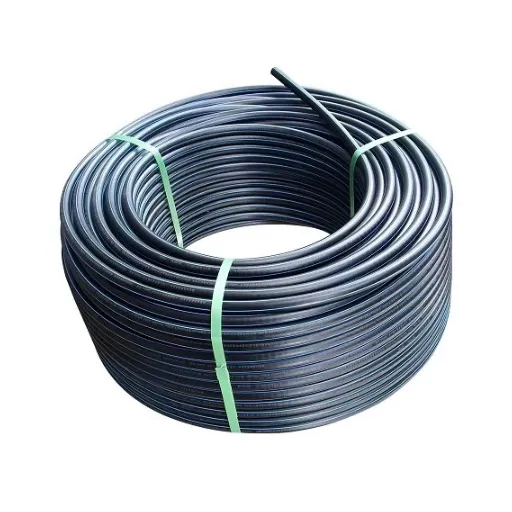
Overview of ASTM Standards for HDPE Pipes
Standards by the ASTM aim to protect the quality, safety, and performance standards of High-Density Polyethylene Piping Systems. These standards provide specifications for the makeup of the material, mechanical properties, and methods of testing, giving uniformity to manufacturing and installation techniques.
Particularly important within this series of standards is the ASTM D3350, which defines specifications for polyethylene plastics used in piping applications. The Standard classifies HDPE materials according to criteria such as density, melt flow rate, and resistance to stress cracking to match specific environmental and operational standards. Further, ASTM F714 relates to the designation of PE pipes, prescribing their dimensions and pressure ratings to suit the industry requirement for water and wastewater systems.
This is the second important standard. ASTM D2837 describes a procedure for determining the long-term hydrostatic strength (LTHS) of thermoplastic pipes. Precisely, this method predicts how long HDPE piping systems can be expected to last and perform reliably under sustained pressure loads. Another important standard is ASTM F2620: the specification of the standard practice for heat fusion joining of polyethylene pipes that must be joined to have zero leakage and full structural strength.
Subject to the above-discussed standards, HDPE systems resist the harsh industrial and environmental forces. The standards ensure uniformity among the products, give safety to the users, and provide improvement toward the efficient operation of pipeline infrastructure that serves as a dependable solution for so many practical applications in areas including water supply, gas conveyance, and industrial plumbing.
Comparison with Ductile Iron Pipe Standards
Ductile Iron pipes boast excellent strength, pressure resistance, and life, whereas HDPE pipes have high flexibility, corrosion resistance, with inexpensive installation, and low maintenance.
| Key Point | Ductile Iron (DI) | HDPE |
|---|---|---|
| Strength | High (42,000 psi) | Moderate (1,600 psi) |
| Pressure | Up to 350 psi | Up to 254 psi |
| Corrosion | Needs coatings | Inherently resistant |
| Flexibility | Rigid | Highly flexible |
| Installation | Complex, needs thrust blocks | Easy, no thrust blocks |
| Lifespan | 100+ years | 50-100 years |
| Cost | Higher upfront | Lower upfront |
| Surge Pressure | High (100 psi per 2 fps) | Low (22 psi per 2 fps) |
| Environmental | Recyclable, energy-intensive | Lightweight, eco-friendly |
| Temperature | Stable (-10°F to 150°F) | Expands/contracts more |
Calculating the Appropriate Thickness
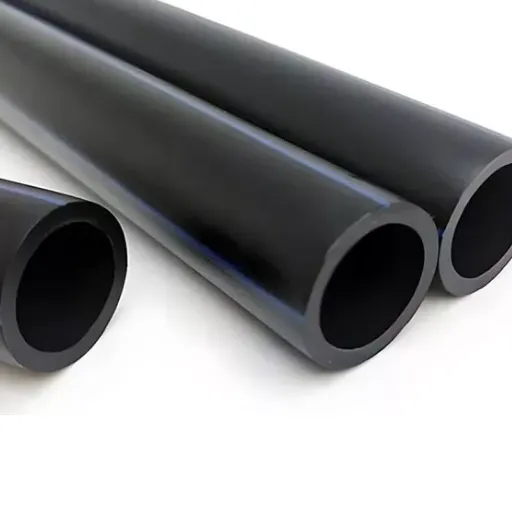
Factors Influencing Pipe Thickness Selection
The appropriate choice of pipe thickness is really governed by a series of mechanical, environmental, and operational considerations that arise out of precise engineering calculations, application of relevant codes, and adherence to standards. Below are the primary factors for selecting the pipe thickness is selected for:
- Internal Pressure and Design Pressure: The list of internal pressures of fluids transported through pipes is perhaps placed at the highest priority. The pipe must be able to sustain such pressure without failure. The design pressure normally includes a safety factor above the maximum operating pressure, and it must conform to the appropriate industry codes (e.g., ASME B31.3 or API 570).
- Corrosion Allowance: Pipes in corrosive environments or those carrying corrosive substances require an additional allowance of wall thickness to allow for loss in thickness due to corrosion during their service life. In general, the corrosion allowance thickness is calculated with the knowledge of corrosion rate and anticipated service life.
- External Loads: The required thickness gets touched upon by external forces like loads from buried pipes, soil pressure, and potential impact forces. For buried pipes, factors like soil type, depth of burial, and vehicular loads have to be seriously considered from the point of structural analysis.
- Temperature Variations: Pipes that are subjected to high temperatures or varying temperatures should consider thermal expansion and the reduction of strength in their materials. Material selection or thickness might just be made dependent upon the thermal conditions under which they are going to be working.
- Material Properties: Mechanical property features, such as tensile strength, yield strength, or even ductility of the pipe material, are of great concern when considering the required thickness. It may be possible to decrease the thickness if the material holds a strength that is higher than average.
- Standards and Regulatory Compliance: For a given application and pressure rating, the industry codes, such as ASME standards and ISO guidelines, set minimum wall thicknesses. As such, staying within code guarantees safety, reliability, and regulatory acceptance.
- Erosion and Abrasion Considerations: Any setup that hauls solids suspended in liquids or is otherwise exposed to abrasive media requires additional wall thickness for erosion resistivity. Consider, for instance, slurry or hydrotransport systems.
- Economic and lifespan trade-offs: The larger the pipe thickness, the more durable it really is, but the material and fabrication costs escalate accordingly. Hence, putting economic considerations against the desired lifespan, you have to look into the total ownership cost.
In consideration of these, while conducting the engineering design, pipelines must be able to fulfill the particular requirements attached to an application while also keeping a safety margin and achieving efficient performance for the intended life.
Using Size Charts for Accurate Thickness Measurement
In engineering and material sciences, size charts are extremely useful for determining the required thickness range for a specification. Size charts give standardized dimensions depending upon operational pressure, temperature tolerance, external environmental factors, etc. Referring to the correct size charts allows engineers to make sure that they meet industry standards like ASME, ASTM, or ISO, which are paramount for safety and reliability.
Walls of pipes and tubes can be calculated from the pre-defined charts taken against nominal size and schedule number. These schedules assess the relationship between outer diameter, thickness of the wall, and stress resistance to ensure that the material used can bear the required stresses, internal or external. It further provides a circumvention to probable errors of omission that come from a manual interpretation framework when clarifying dimensional and tolerance specifications.
Using these detailed charts along with computational methods, designers or engineers can fine-tune material efficiencies against safety and life standards, something usually left unchecked in other approaches less formidable.
Practical Tips for Selecting HDPE Pipe Thickness
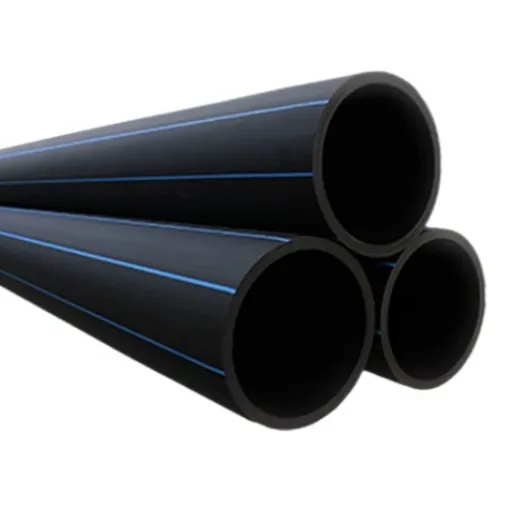
Choosing the Right Thickness for Different Projects
The right thickness of an HDPE (High-Density Polyethylene) pipe will prove to be crucial for performance, durability, and cost-effectiveness. Project needs, including pressure ratings, environmental conditions, and load stresses, affect the Standard Dimension Ratio (SDR) of the pipes. SDR is the ratio of the pipe’s outer diameter to its wall thickness and is an indicator of pressure-handling capacity. Lower SDR values mean thick walls and high pressure tolerance. Higher values of SDR are given to light-weight pipes that are suitable for low pressure.
For high-pressure distribution systems, an SDR of 11 or lower is recommended, as it would have to withstand high internal pressure without failing. Conversely, pressureless systems such as gravity drainage could get away with an SDR somewhere upwards of 17-sided due to low-pressure requirements. Engineers must also take into account external factors like soil type, possible ground movement, and temperature variations, as these could have an impact on the long-term performance of the pipes.
Simulation software and material testing data can shed light on stress conditions simulated and perform analyses to evaluate their behavior under actual loads. Consequently, by adopting this approach backed with data and selecting options adhering to ASTM or ISO standards, decision-makers eliminate trial-and-error while ensuring that their pipeline meets all project specifications without compromising either safety or longevity of material.
Considerations for Microduct vs. Traditional Conduit
The selection of either microduct or conventional conduit remains a critical decision strongly determined by factors like the installation environment, project scale, and performance requirements. Microducts, smaller and flexible, are appropriate for high-density cable installations in urban areas or where space is limited. Less material is used to manufacture these tiny ducts, thus leading to better usage of underground pathways, using less installation cost, and easy deployment. Some microduct systems also come pre-lubricated, thereby reducing friction during cable installation and prolonging the life of the cables contained therein.
Still, in other words, when an enhanced level of durability and protection is required, especially in harsh forms of environmental mutability and mechanical stresses, these conduits are the preferred option. Usually, said conduits are PVC, HDPE, or steel, and they provide a heavy seat for mechanical action and damage through heavy loads or shifting soils. The traditional conduit systems are generally used for bigger-diameter cables because of their larger capacity and greater structural strength.
Some things must really concern us when comparing the two, such as standards adherence, be it NFPA 70 (nectar: National Electrical Code) for safety and installation practices, or local building codes. And the other way to do cost analysis should consider not just installation at present, but also upkeep and repair for the long term in relation to either choice. By selecting conduit in accordance with the project necessities and environment, decision-makers can achieve into best performance outcome with respect to budgetary constraints and regulatory compliance.
Common Mistakes to Avoid in Thickness Selection
❌ Critical Errors to Avoid
1. Ignoring Environmental Stresses
One of the most common errors when selecting the right thickness for a material is setting aside the environmental stresses a material will have to endure. For instance, one may specify a material too thin, thereby risking a premature failure should it be subjected to high mechanical loads or thermal variations, and even corrosive atmospheres on the other hand. More often, the focus is on reduced upfront costs, with little understanding of the implications of material degradation or loss of structural integrity in the long run.
2. Overlooking Standards and Regulations
Another hang-up is that project standards and regulations, which typically set forth the minimum thickness requirements for safety and performance, are ignored. Overlooking the standards might pave way toward non-compliance and could delay the project or even present legal issues. To clinch a firm grasp of the applicable guidelines is thus of paramount importance, so that appropriate thickness selections can be made with respect to both technical and legal requirements.
3. Relying on Generalized Assumptions
Lastly, whereas relying on generalized assumptions is the single most critical error, it has the potential to become serious when calculations or simulations are not done and consideration of the actual application is not given. Potential changes in load distribution, operating conditions, and material may alter performance. Accurate engineering analyses and consultation with material science experts will help you avoid costly mistakes and mature the selection of materials into a technically and economically supported process.
Frequently Asked Questions (FAQ)
Q: What is the HDPE pipe thickness?
A: HDPE pipe thickness means the measurement of the wall of the pipe made up of high-density polyethylene. Such thickness is crucial in ascertaining the strength of the pipe, pressure rating, and its use for various applications like water and sewer systems.
Q: How is HDPE pipe thickness measured?
A: HDPE pipe thickness is measured in millimeters (mm), and it is usually given as the outside diameter (OD) and inside diameter (ID). However, the measure can also depend on the pipe size and the price class, which are primary considerations for the intended use of the pipe.
Q: What are the different HDPE pipe sizes available?
A: HDPE pipes are available in all sorts of sizes, from very small diameters suitable for residential applications to very large diameters for industrial and municipal water supply systems. Usually, the size conforms to the standards laid down by institutions like AASHTO and ASTM International.
Q: What is the significance of AASHTO and ASTM standards for HDPE pipes?
A: AASHTO and ASTM standards lay down specifications for the quality, performance, and testing of HDPE pipes. It helps assess the durability needed by the pipe, its pressure ratings, and overall safe use in water and sewer installations.
Q: How does pipe thickness affect HDPE pipe fittings?
A: The thickness of HDPE pipes affects pipe fittings’ compatibility and functionality. Making the correct choice of fitting is important to ensure a leak-free connection, especially in highly pressurized systems. Hence, thicker pipes may require fittings specifically designed for their dimensions.
Q: Can HDPE pipe thickness influence its UV resistance?
A: Generally, HDPE pipes with thicker walls offer better protection against ultraviolet degradation, which is significant for external installations. Thus, pipe thickness becomes important in applications where sunlight exposure is present.
Q: How does pipe thickness relate to SIDR for HDPE pipes?
A: SIDR stands for Standard Inside Diameter Ratio. It refers to a method of sizing HDPE pipes based upon their inside diameters rather than their outside diameters. This specification informs thickness of pipe and is important in order for fittings and other components to be compatible with each other.
Q: What is the hydrostatic design basis for HDPE pipes?
A: The hydrostatic design basis (HDB) for HDPE pipes is a measurement of the pipe’s ability to withstand internal pressure. This internal pressure depends on the thickness of the pipe and the properties of the material used to make it, and ensures that the pipe is capable of conveying liquids safely in different uses, including oil and gas.
Q: How do production methods for HDPE pipes differ?
A: Production methods for HDPE pipes do differ and include extrusion and corrugation, among others. Such considerations as production methods affect the pipe’s thickness and strength as regards its appropriateness to the given microduct or traditional installation.
Q: How do I select the HDPE pipe thickness for my project?
A: The process of selecting an HDPE pipe thickness involves the intended application of the pipe, the pressure class, and environmental considerations. Consult manufacturers or engineering guidelines in order to select the thickness that suits your particular needs.
References
- Iowa State University – SW-103: Document, covering all aspects relevant to construction, gives specifications and HDPE pipes, trench width.
- IS 4984:2016 Dimensional Chart: These denote acceptable dimensions, external diameters, and weights for HDPE pipes in accordance with IS specifications.
- Texas A&M University – Underground Installations: The design standard elucidates wall thickness requirements for HDPE pipes involving dimension ratios and load-bearing capacities.
- University of Colorado Anschutz – Pre-Insulated Piping: This document offers recommendations for HDPE jacketing and insulation for underground piping systems.
- USDA Technical Notes: Technical notes give scopes on HDPE pipe dimensions, wall thickness, and operating conditions.
Ready to Choose the Right HDPE Pipe Thickness?
Understanding HDPE pipe thickness specifications is crucial for optimal performance, durability, and cost-effectiveness in your piping projects. Consider all factors including pressure requirements, environmental conditions, and industry standards when making your selection.



